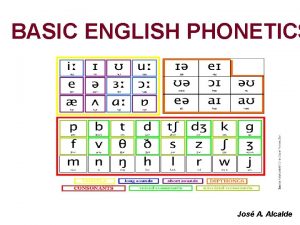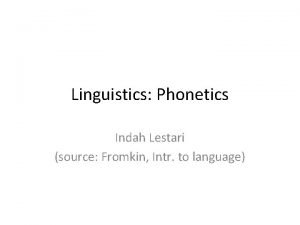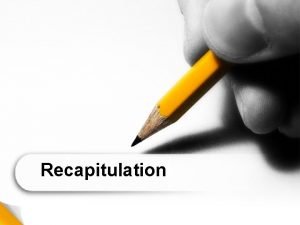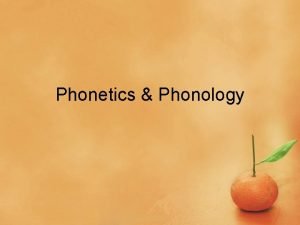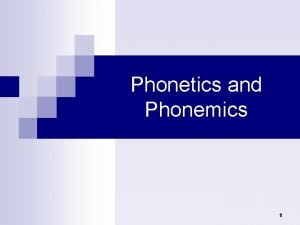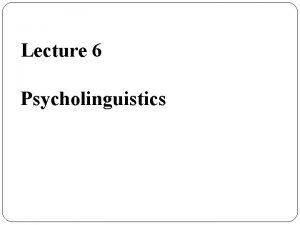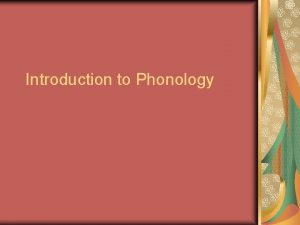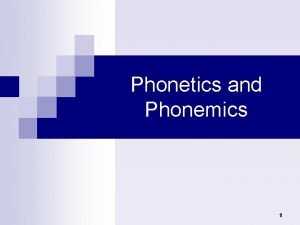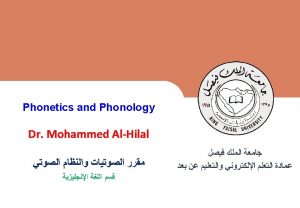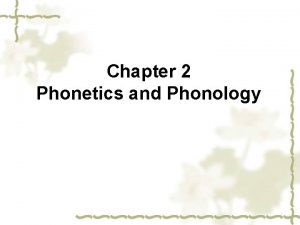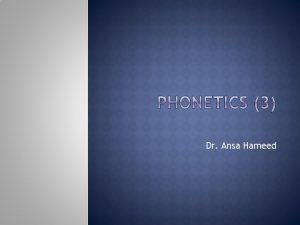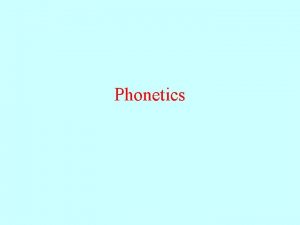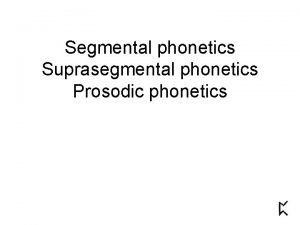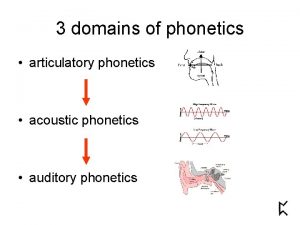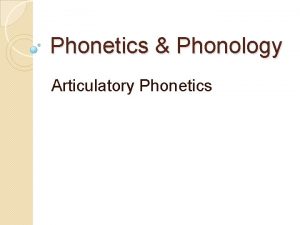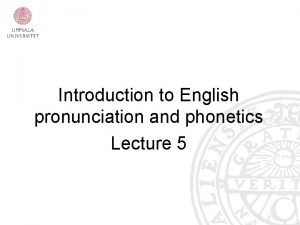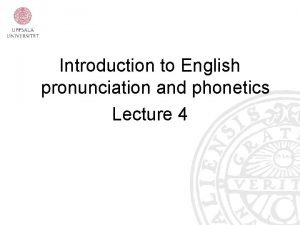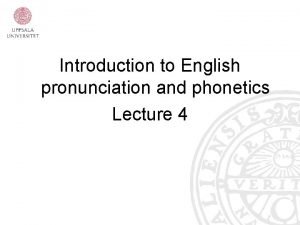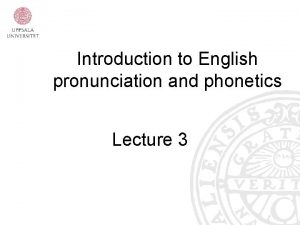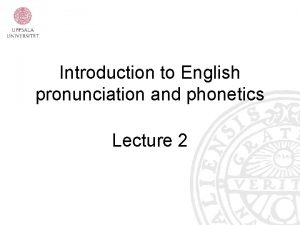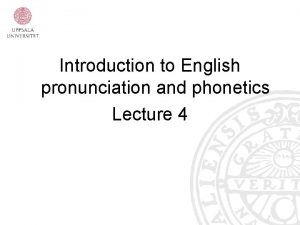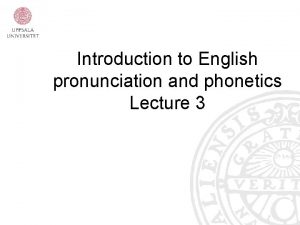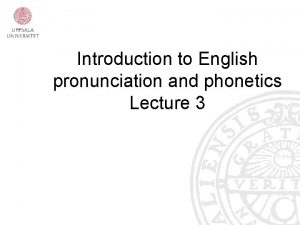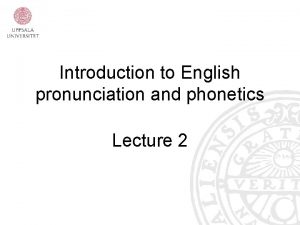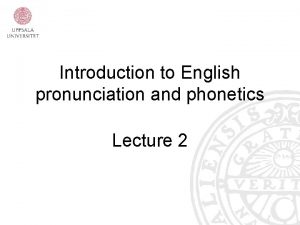Introduction to English pronunciation and phonetics Lecture 1


















- Slides: 18

Introduction to English pronunciation and phonetics Lecture 1

Course outline • Part of the language structure course • Five lectures • Seminars • Written exam

Provide answers to questions such as. . . • what is the most common sound in English? • what is the crucial difference in pronunciation between ‘ice’ and ‘eyes’? • why does the word ‘joke’ have nothing to do with the yellow part of an egg? • why do Swedish learners have difficulty pronouncing words like ‘thermometer’ and ‘parenthesis’?

Course content • The English speech sounds • Phonetic symbols and the IPA • Spelling-sound differences • Contrasts between Swedish and English • English stress patterns

Two major models for English pronunciation Received Pronunciation (RP) “British English” General American (GA) “American English”

Spelling and sound – hardly a perfect match One sound sequence: /si: / may be spelt: see, sea, senile, scene, cease, seize

One spelling sequence: ’ough’ may be pronounced: cough, though, bough, thought

G. B. Shaw Word spelt ’ghoti’ should be pronounced ’fish’ enough women station

Vowel sounds • • voiced open air stream centre of a syllable English has 17 -20 vowel sounds, but only five letters!

Monophthongs (mono- = one) • • • open (‘sad’) or close (‘seed’) front (‘needle’) or back (‘noodle’) short (‘hat’) or long (‘heart’) normally unrounded in English compare Eng ‘mood’, Swe ‘mod’ ‘fyra nya röda tröjor’

Short vowels /e/ as in ‘bed’ /æ/ as in ‘bad’ Examples /e/ : said, head, many, bread /æ/ : sad, had, Manny, Annie, Brad

/ə/ – schwa • the most common vowel sound in English • used in unstressed syllables • where the vowel is reduced Examples above, polite, suppose, sofa Compare: land /lænd/ England/ˈıŋlənd/

/ʊ/ as in ‘put’ Examples bull /bʊl/ wolf /wʊlf/ soot /sʊt/ Compare: Sw ‘gods’ Eng ’goods’ /gʊdz/

/ɒ/ as in ’got’ GA has /ɑː/ or /ɔː/ in most words where RP has /ɒ/ Examples gone /gɒn || gɔːn/ bomb /bɒm || bɑːm/ song /sɒŋ || sɑːŋ /

/ı/ as in ‘sit’ Examples begin /bıˈgın/ target /ˈtɑː(r)gıt/ city /ˈsıtı/ Compare: Sw ’bild’ Eng ’build’

Long vowels /i: / as in ’see’ Examples free, be, neat, peel /u: / as in ’blue’ Examples soup, pool, cool

/ɜː/ as in ’earth’ Examples heard, earn, murder /ɔː/ as in ’door’ Examples sore, sauce, yawn /jɔːn || jɑːn/

 Introduction to general phonetics and phonology
Introduction to general phonetics and phonology Basic english phonetics
Basic english phonetics Phonetic is
Phonetic is 01:640:244 lecture notes - lecture 15: plat, idah, farad
01:640:244 lecture notes - lecture 15: plat, idah, farad Phoneme definition
Phoneme definition Differences between phonetics and phonology
Differences between phonetics and phonology Questions about phonetics
Questions about phonetics Phonetics and phonology
Phonetics and phonology Introduction to english linguistics exercises answers
Introduction to english linguistics exercises answers Phonetics and phonemics
Phonetics and phonemics Working memory
Working memory Difference between phonetics and phonology
Difference between phonetics and phonology N phonetics
N phonetics Phonetics and phonemics
Phonetics and phonemics What is the difference between phonetics and phonology
What is the difference between phonetics and phonology Phonetics and phonology
Phonetics and phonology English literature lecture
English literature lecture English language lecture
English language lecture Introduction to biochemistry lecture notes
Introduction to biochemistry lecture notes

